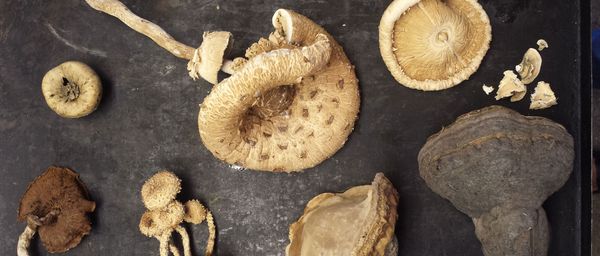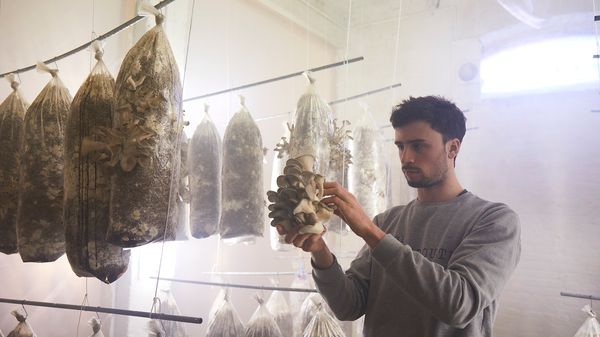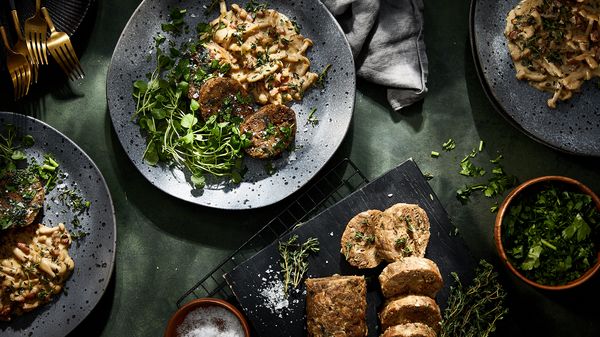Fungi use enzymes to break down renewable plant-based raw materials into their individual constituents. This means that many different species can feed on dead, organic biomass such as dead trees. As masters of decomposition, they extract nutrients from the dead wood that is used at the start of the food chain. And mushrooms also accelerate an upcycling process: thanks to synthesis, they combine individual components of the biomass and produce new, different biomaterials. And the whole process is also very environmentally friendly: to manufacture a kilogram of cotton, you need 10,000 litres of water, but to produce the same amount of textiles from mushrooms only requires 100 litres. Composite materials for home construction that are biotechnologically sourced from mushrooms produce considerably less CO2 than conventional building materials such as concrete. And the best thing? Once they are no longer needed, the walls or tiles made from mushroom-based materials can simply be thrown on the compost heap. If Vera Meyer is to be believed, we will all soon live in houses made from fungal substances: ‘Not tomorrow or the day after that, but maybe in ten years’ time’. At the moment, however, there are no suitable production facilities to process the required quantities.

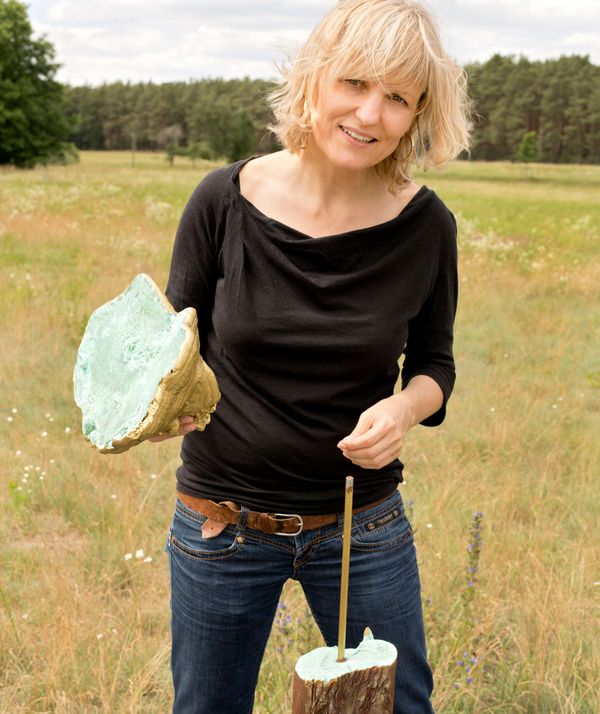
Mushrooms belong in the pan, with saddle of venison steak or in tasty pasta dishes. We know about their link to lifesaving penicillin and we’re familiar with them in the form of a yeast fungus for making beer and bread. But according to scientists such as Vera Meyer and Philipp Benz, mushrooms will likely revolutionise our lives in the near future. Not only will they be used in the kitchen, but also as tiles on the kitchen wall or as bricks in the foundations of houses. Mushrooms are already used in the production of food, detergents, paper, fuel and medicines. Several everyday objects would not exist were it not for the use of fungal biotechnology. For Vera Meyer, professor, artist and head of Applied and Molecular Microbiology at TU Berlin, ‘Mushrooms are the way to convert our petroleum-based economy into a bio-based one’. Mushrooms are neither animals nor plants, but form their own kingdom within nature, called fungi.

NEITHER AN ANIMAL NOR A PLANT
According to estimates, there are around six million different species worldwide that comprise several different kinds of characteristics. The largest living organisms in the world are not in fact whales in the oceans or elephants on land, but a fungus in Oregon, USA. The giant, which is known as the ‘Dark Honey Fungus’ (Armillaria ostoyae), covers an area of 9.65 square kilometres, which equates to around 1,352 football pitches. It is somewhere between 1,900 and 8,650 years old.
Only around 150,000 types of mushroom have been scientifically investigated so far, but even these have made a huge contribution to making our world a healthier, more sustainable and more liveable place – they save resources and can be recycled. Fungal substances can replace building materials such as concrete and plasterboard, leather as an item of clothing and packaging made from plastic. The Italian designer Maurizio Montalti and his company Mogu have even developed floors and wall tiles made from mushrooms. Proof of their sustainability lies in their energy footprint: to create bio-bricks, i.e. bricks made from biological substances, temperatures of between 70 and 120 degrees are required. For stone bricks, a temperature of up to 1400 degrees is needed.
NATURE’S RECYCLING PLANT
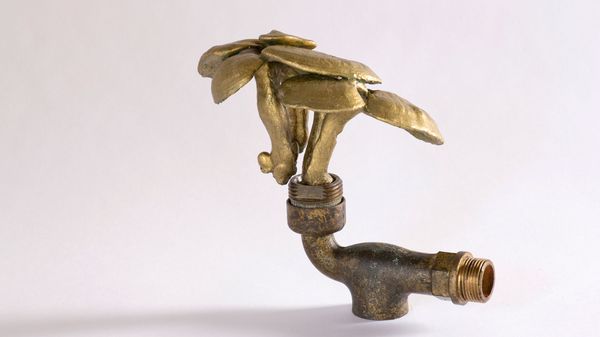
HELP AGAINST HUNGER
Protein-rich meat substitute products made from mushrooms are on trend, and not just for vegetarians. The taste and texture of some mushrooms is even very similar to meat. However, the production of meat substitute products using mushroom mycelium has now taken off. There’s a good reason for this: the mushroom meat from the bioreactor is substantially more efficient and sustainable than the animal original. Ten times the amount of water is required to make the same amount of protein from beef as we get from mushrooms and double the amount of water is required to get the same amount of protein from chicken. Mushroom meat is also very healthy and contains lots of proteins, amino acids and fibre.
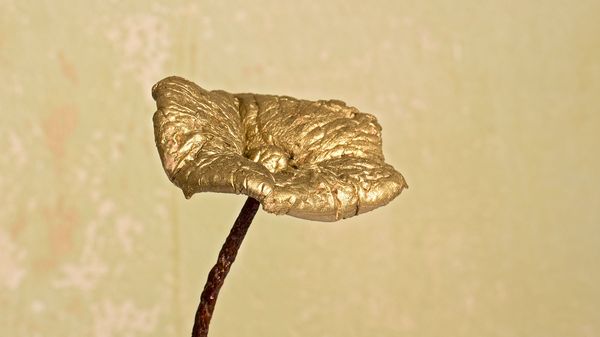
FUNGI AS AN ART OBJECT
For Vera Meyer, mushrooms are not just the construction materials of the future or meat substitutes of the present, but also art objects that she is passionate about: ‘I build sculptures made from chance finds, such as bracket fungi and rotten wood as well as thrown away objects and items that appear to no longer be useful, such as scrap and disposable materials. I want to give the transient and discarded a new, unplanned (co-) existence’, she says. She also works with a lot of gold in her art projects, ‘in order to draw a new kind of attention to these rewoven things that appear to be useless by cloaking them in the golden robe of death’. Her art is also influenced by her scientific work, she says. It changes her perspective and helps her identify new structures, characteristics and possibilities. ‘The artistic view of an object or organism can give scientists unexpected ideas’. Leonardo da Vinci was, after all, an artist as well as an inventor, engineer and anatomist.
VERA MEYER
The biotechnologist, a professor at TU Berlin, is also an artist. She creates unusual and beautiful art objects made from biomaterials.
